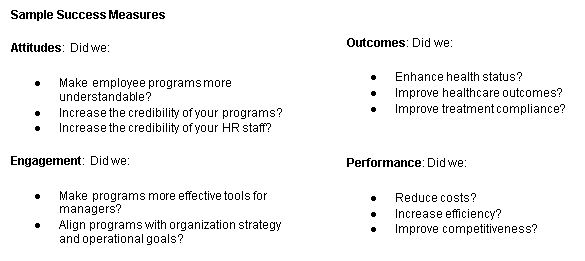Vision without action is merely a dream. Action without vision just passes the time. Vision with action can change the world. – Joel A. Barker, Futurist
HR technology, when applied well, has the potential to make a positive difference in the lives of employees and improve organizational results: In fact, there may be nothing more powerful and effective at portraying and positioning the organization’s commitment to its people – through its wellness programs, services, total rewards strategy and programs, organizational culture and approach to employee engagement.
But when HR comes to making the business case for acquiring new technology, things get tough. Evaluating vendors, costing out solutions, estimating disruptions during implementation, determining how current and new systems will talk to each other. When you add to that trying to get reliable numbers to figure out what Finance always needs to know – the return on this investment – it’s understandable why a strong vision, or a strong action plan, or both, get lost along the way.
Our own experience has consistently shown the value of taking a step back to validate the objectives and business imperatives behind adopting this or that solution. And if the technology is employee-facing, you need to know what behaviors are important to drive and, the full scope of what needs to be done. You also need to evaluate priorities, and identify how various activities impact one another. Making an initial investment to “get your ducks in a row” has a significant impact on the overall effectiveness of any technology changes and the firm’s ability to achieve its long-term goals, using technology as an enabler.
This important first step is what we call “Phase Zero.” It comprises four steps and results in a true business justification for the project, as well as a compelling vision and achievable action plan.
[ctt title=”“Phase Zero” has a significant impact on HR’s ability to achieve its goals for technology. #HR Insights ” tweet=”“Phase Zero” has a significant impact on HR’s ability to achieve its goals for technology. #HR Insights http://ctt.ec/jb8N5+” coverup=”jb8N5″]
“Phase Zero” – Defining the Right Strategy…
Phase Zero is a 4-step process that lays out a strategic HR technology implementation roadmap:
- Step 1: Preparation – Collect and review data and documentation to develop an effective strategy.
- Step 2: Definition – Hold a cross-functional strategy workshop, using the “imperatives-strategies-tactics” approach, through which business imperatives are linked to the HR technology strategy. Then, based on the strategies associated with each imperative, begin to define the activities required to execute those strategies, taking into account relative priorities, potential dependencies, and other in-flight or planned activities.
- Step 3: Roadmapping – Create a roadmap that outlines all the tactical activities required, based on priority, dependencies and resource constraints, to achieve the desired “Day One” results, while also documenting the long-term vision.
- Step 4: Validation – Validate the detailed list of activities and timing, and ultimately finalize the Roadmap.
The primary outcomes from this investment include:
- A confirmation of your ultimate service- and information-delivery model, outlining desired employee perceptions, behaviors and cultural attributes, and solidifying your goals related to user experience, self-service and brand messaging.
- A high-level analysis of your current technology environment, identifying what data and administrative tools are currently in place for employees. This includes internal and external data sources, administration systems, and communication channels.
- A high-level phased implementation plan. It may start with a re-launch of existing intranet sites, focusing on informing employees about upcoming program changes and educating them about those programs, in order to both help them understand their purpose as it relates to the larger organization’s goals, and help define a consistent brand identity. The plan will then detail the next steps for consolidation, expanded functionality to be launched in subsequent near-term and longer-term phases, and the required change management tools and techniques to ensure adoption upon launch.
- A high-level proposed navigation schema including (non-graphical) wireframes of user interface design. This schema will also visualize the proposed integration strategy.
- Business justification for the impending initiative. A clearly defined service- and information-delivery model demonstrating the intended “end state” with an implementation roadmap showing the way to get there and the ROI associated with “arriving” are valuable tools that will support informed discussions with key constituents and leaders within the organization.
Regardless what it is being applied to, Phase 0 helps ensure that the needs and wants of the end user are addressed right from the start.
…And Documenting the Desired Outcomes
Putting together a compelling business case doesn’t have to be that hard. Simply documenting the desired outcomes and corresponding success measures that will be employed to determine whether those outcomes are achieved often is enough. When a more rigorous business case is required, financial measures associated with these improved outcomes should be quantified wherever possible.
Applying the Phase Zero Approach to Other Initiatives
While most frequently employed when technology projects are involved, the “Phase Zero” approach can be used to create a compelling vision and realistic action plan for any HR initiative: from implementing a new performance management system to designing and deploying an innovative financial wellness program.
As management guru Warren G. Bennis says, “Leadership is the capacity to translate vision into reality.” Using the Phase Zero approach gives HR a powerful tool to help lead the organization to success.
For more about applying an “end user” approach to designing HR programs read my previous post, Kitty Hawk, Wagons, and HR Programs
